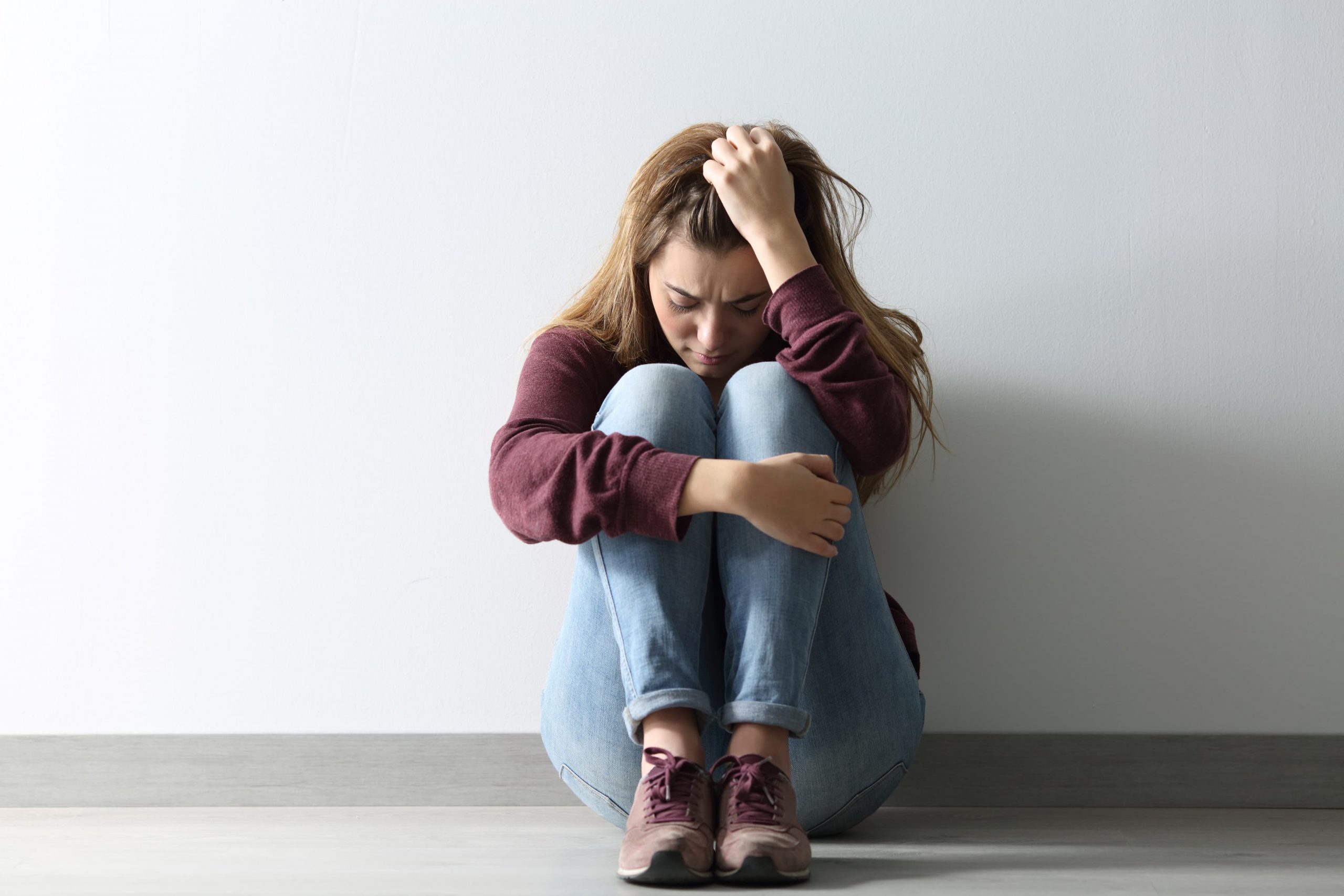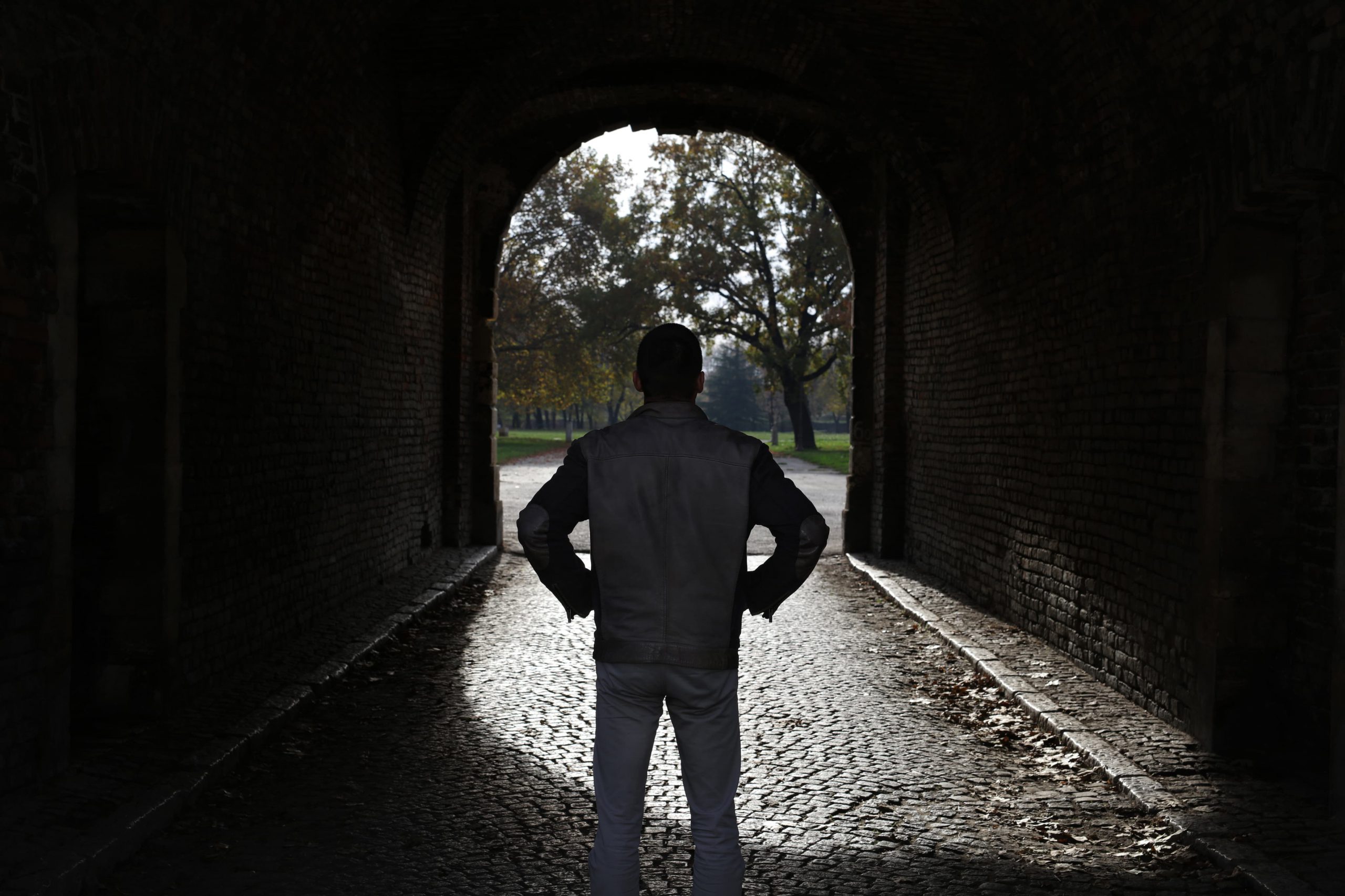When opioids are prescribed for pain relief, they are generally safe if taken for a short time and only as prescribed by a doctor, but if taken for extended periods and misused; not taken per the prescription, regular use can lead to dependence, tolerance, addiction, overdose, and death. Because of the possible euphoric effect opioids can produce, they are easily misused.
Many people ask, how long does it take to get addicted to opiates? Everyone is different; many factors can bear on how long it takes to form an addiction. With repetitive and excessive use, it does not take very long to develop a dependence. In just a few continuous days of using heroin, some withdrawal symptoms may be experienced upon stopping the use of the drug.
When using opioids to experience euphoria, to get “high,” addiction can develop quickly. The use of other substances like alcohol and a person’s predisposition to addiction can cause more rapid development of dependence and addiction.
Treatment for Opioid & Opiate Addiction
The Diagnostic Statistical Manual, the DSM-5, defines “opioid use disorder” with a lengthy list of criteria and specifiers. The spectrum of opioid use disorder spans a wide range of patterns of use, levels of dependency, and degrees of addictive behaviors.
We have heard a lot lately about opioid addiction in America from the news, politics, and just about everywhere you turn. If you, a family member, or a friend have been affected by this disorder, you are all too aware of the great challenges associated with opioid addiction. This article will explore the specifics of what opioid addiction is, why opioids are so addictive, what happens physiologically in opioid dependence and addiction, other opioid addiction facts, and how to get help for an opioid addict, whether it be yourself or someone you love.

What are
opioids and opiates?
An opioid is a class of narcotic drugs that interact with opioid receptors within the brain and body to help block pain signals and minimize a person’s sensations of pain. These drugs are highly addictive because of the accompanying euphoric effects.
Opioids include synthetic drugs such as fentanyl and methadone, as well as legally prescribed pain relievers like oxycodone (OxyContin, Percocet, Percodan, Roxycodone) hydrocodone, (Vicodin, Lortab, Lorcet,) codeine, morphine, Darvon, Demerol, Dilaudid, and others. An opioid can be natural, synthetic, or semi-synthetic.
Natural opioids are known specifically as opiates, including morphine, codeine, and the illegal drug, heroin. These opiates are directly derived from opium and the natural alkaloids found in the resin of the opium poppy. Heroin detox can be very dangerous, and must be conducted under medical supervision.
Most opioids are consumed in pill form, however others can be administered through injection or IV, a patch on the skin, or via suppository. While prescription opioids are safe and effective when taken as directed by a doctor, they are often abused and can lead to severe life-threatening addictions.
In recent years, synthetic opioids have been responsible for a large spike in overdose deaths. According to the CDC, more than 36,000 lives were lost as a result of synthetic opioids in 2019. That is an increase of 16 percent from 2018 and nearly 12 times that of 2013. A large reason for this dramatic increase is the rising presence of illegally made fentanyl, a synthetic opioid with a potency 50-100 times stronger than morphine. Once a person becomes addicted or dependent on the effects of opioids, professional treatment can help restore a healthy and addiction-free life.


Opioid/Opiate Addiction
Opioid addiction is the compulsive use, despite negative consequences, of one or more of the substances in the opioid class of drugs and, like all addictions, is a disease of the brain. Opioid addiction is centered in the brain’s reward system. The brain develops a dependence on opioids with repetitive use, and addiction occurs when the drug’s euphoric effect is repeated to the point that the brain perceives the drug to be necessary to survival.
The addict, on some level, is convinced they will die without the drug. This driving compulsion is at the core of the opioid addiction crisis.
Why are opioids addictive, and what is opioid addiction like? These drugs are related chemically and interact with the opioid receptors on nerve cells in the body and brain. The body produces naturally occurring opioids called endorphins to regulate pain and pleasure. The receptors in the brain don’t know the difference between natural endorphins and opioid drugs.


Opiate/Opioid Withdrawal &
Detox
Opioid dependence develops when neurons adapt to the repeated exposure to the drug and only function normally when the drug is present. When the drug is removed, several physiologic reactions occur. This is known as “withdrawal.” Nausea, vomiting, diarrhea, body aches, difficulty sleeping, restlessness, anxiety, runny nose and watery eyes, rapid heart rate, and high blood pressure are all withdrawal symptoms.
It can be very uncomfortable, and the dependent person often seeks more opioids to relieve discomfort and to allow them to feel “normal” again. “Tolerance” is the effect of needing higher and higher doses of the substance to achieve the same effect. With heroin or morphine, tolerance to the pain-relieving effects develops rapidly, causing the user to increase the dose. This is also true to some degree of all opioids and can lead to addiction. When opioids are misused for the euphoric effect, and more and/or increasingly stronger drugs are used, addiction develops.
This euphoric effect is one reason why opioids are so addictive. And yes, all opioids are addictive to one degree or another. There is no such thing as nonaddictive opioids. Science is working on developing less-risky opioids like buprenorphine, which is also used to treat opioid addiction. However, buprenorphine still has some addictive properties and is also very costly and often not covered by insurance.
Opiate/Opioid Symptoms
-
- A loss of control of the use of an opioid substance
- Strong cravings or drug-seeking behavior
- New financial struggles
- Social isolation from
friends and family - Inability to focus on work or school
- Health issues and poor hygiene
- Drowsiness and changes in sleeping patterns
- Loss of weight or appetite
- Loss of interest in previously enjoyed hobbies and activities
- Decreased physical activity
- Stealing to help fund one’s addiction

What are the best opioid treatments?
Opioid addiction can be professionally treated to help a person overcome their addiction and begin living a healthy, drug-free life. At Beachway Therapy Centers, we offer inpatient, outpatient, and residential treatment and therapy for opioid addiction.
Our inpatient/residential treatment for opioid addiction provides patients with a safe and supportive drug-free environment to focus on their recovery. Patients have access to specialized physicians and counselors, as well as a group of peers who share the same goal. Beachway offers traditional therapies as well as unique holistic therapy such as equine or art therapy.
Outpatient treatment can be beneficial for helping patients readjust to their normal life following inpatient and residential treatment. Continued intensive outpatient treatment (or IOP) includes ongoing group and individual counseling, supervision, medication management, and more.


What does opioid addiction treatment look like at Beachway?
The first step in opioid addiction treatment is the drug and alcohol detox phase. Detox helps to flush the drugs out of your system safely while keeping you as comfortable as possible. We provide our patients with 24-hour nursing care and physician visits as needed. You will be carefully monitored and cared for during this period as withdrawal symptoms are extremely common and may be severe. This detox phase of recovery can last for a few days or multiple weeks depending on the severity of addiction.
Medically supervised detox is important to ensure all vital signs are monitored and any health and safety concerns are addressed immediately. Medication to assist in the detox process and address any other medical and psychiatric needs can be appropriately prescribed by a psychiatrist, and ongoing medication management can be administered.
After the initial detox is completed, usually in a few days, a period of at least four to six weeks of inpatient treatment is advisable. Residential treatment provides a supportive, drug-free environment, education about addiction and recovery, group and individual therapy, 12 Step and peer support, and a holistic, healing experience. After in-patient treatment, many people benefit from continued intensive outpatient treatment (IOP) and supportive “sober living” housing. This consists of continued group and individual counseling, supervised housing, continued 12 Step participation, and medication management.
After completing IOP, continued, stepped-down, out-patient treatment should continue until the recovering addict has established a strong base for their recovery and a positive support network. A continuous and comprehensive program of recovery that gradually transitions from one level of care to the next, as seamlessly as possible, along with continuous 12 Step involvement, builds strong and stable sobriety that is less likely to succumb to relapse.

Opioid FAQs
How do you get addicted to opioids?
Who is at risk for opioid addiction?
Anyone who is prescribed opioids for pain, someone with an injury or surgery, even dental work, or other relatively minor procedures or conditions can subject person to fall prey to opioid addiction, given the right circumstances and factors. Opioid addiction after surgery or injury is all too common. Someone with chronic pain or a severe injury is especially at risk. A person starts taking the medication as prescribed, but as tolerance and dependence develop, the person may take more and stronger opioids. If the euphoric effects play on the brain’s reward system, addiction is soon to follow. Illicit use of prescription opioids to get high is common also. Young people, some in high school or even as young as middle school, are common victims of illegal opioid use. Sometimes they start legally by being prescribed medication for pain. They may then move on to buying the drug illegally on the street or take their parent’s or another adult’s medication to get high. Before long, they become hopelessly addicted. The not fully developed brains of the young are even more susceptible to opioid addiction than an adult brain and can pave the way for a life-long struggle with addiction. A family history of addiction or alcoholism can be a predictor of a predisposition to opioid addiction, as can a history of trauma and the early use or abuse of alcohol and other drugs.
We hear about the opioid “epidemic,” but how many people actually are addicted to opioids? According to the CDC, 91 people die every day in the U.S. from an opioid overdose. The numbers for opioid misuse in 2016 for people ages 12 or older in our country are just as staggering; 11.8 million, 4.4% of the population, based on a SAMHSA study. These opioid epidemic statistics are also probably somewhat underreported, as people often are in denial and hide their addiction until it becomes very progressed. Which are the worst states for opioid addiction? According to a recent study by WalletHub, Washington DC has the worst drug problem in the country. After DC, Vermont, Colorado, Delaware, Rhode Island, Oregon, Connecticut, Arizona, Massachusetts, and Michigan follow in ranking as the top 10 states with the worst drug problem. The same study found West Virginia to have the highest number of opioid overdose deaths in the country per capita, with New Hampshire, Kentucky, Ohio, Rhode Island following, and Alabama having the most opioid prescriptions 100 people. With these opioid addiction statistics, it is clear that opioid addiction treatment needs to be a priority in the US. New and stronger regulations for prescribing opioids need to be put in place, and less addictive means of pain control and management need to be developed, in addition to better access to treatment and cracking down on illegal trafficking of opioids.
What are the best opioid treatments?
Opioid addiction can be professionally treated to help a person overcome their addiction and begin living a healthy, drug-free life. At Beachway Therapy Centers, we offer inpatient, outpatient, and residential treatment and therapy for opioid addiction.
Our inpatient/residential treatment for opioid addiction provides patients with a safe and supportive drug-free environment to focus on their recovery. Patients have access to specialized physicians and counselors, as well as a group of peers who share the same goal. Beachway offers traditional therapies as well as unique holistic therapy such as equine or art therapy.
Outpatient treatment can be beneficial for helping patients readjust to their normal life following inpatient and residential treatment. Continued intensive outpatient treatment (or IOP) includes ongoing group and individual counseling, supervision, medication management, and more.
What does opioid addiction treatment look like at Beachway?
The first step in opioid addiction treatment is the drug and alcohol detox phase. Detox helps to flush the drugs out of your system safely while keeping you as comfortable as possible. We provide our patients with 24-hour nursing care and physician visits as needed. You will be carefully monitored and cared for during this period as withdrawal symptoms are extremely common and may be severe. This detox phase of recovery can last for a few days or multiple weeks depending on the severity of addiction. Medically supervised detox is important to ensure all vital signs are monitored and any health and safety concerns are addressed immediately. Medication to assist in the detox process and address any other medical and psychiatric needs can be appropriately prescribed by a psychiatrist, and ongoing medication management can be administered. After the initial detox is completed, usually in a few days, a period of at least four to six weeks of inpatient treatment is advisable. Residential treatment provides a supportive, drug-free environment, education about addiction and recovery, group and individual therapy, 12 Step and peer support, and a holistic, healing experience. After in-patient treatment, many people benefit from continued intensive outpatient treatment (IOP) and supportive “sober living” housing. This consists of continued group and individual counseling, supervised housing, continued 12 Step participation, and medication management. After completing IOP, continued, stepped-down, out-patient treatment should continue until the recovering addict has established a strong base for their recovery and a positive support network. A continuous and comprehensive program of recovery that gradually transitions from one level of care to the next, as seamlessly as possible, along with continuous 12 Step involvement, builds strong and stable sobriety that is less likely to succumb to relapse.
How can you help an opioid addict?
Because of the effects on the addict’s brain, there is a tremendous amount of denial and resistance to admitting they have a problem and getting treatment. The changes in the brain caused by the repetitive use of the opioid, on some level, make the addict convinced that without the drug they will die. They will go to any lengths to continue to use it, including lying, denying, stealing, etc. It is important to understand this and to avoid nagging, threatening or pleading with the addict. It will likely not work and possibly make matters worse, as well as frustrate both you and the addict. Having an open conversation about your concerns with them may be the best initial approach, followed by the suggestion to get a qualified medical opinion. If the person is willing, have them immediately speak to an addictions professional that can assess them appropriately. Do not wait, as they may change their mind. If they will not agree to this, a professional intervention may be beneficial. An interventionist will coordinate and facilitate a group meeting with family and close friends of the addict to tell the addict how their using is impacting their loved ones and to support the addict to get treatment. Stop enabling the addict by not doing things for them that they can do for themselves, not making excuses for them, not covering for them, not giving them money or not helping them get drugs. This is very important and can help them to realize they have a problem and need help. An addict can be incredibly persuasive and manipulative and it requires great strength and perseverance to deal with them. Groups like Al-Anon and Nar-Anon can help by providing peer support, education, and coping tools to manage the challenges of having an addict in your life. Professional counseling is also advisable. If you have a loved one who is an opioid addict, speak to one of the addiction specialists at Beachway Therapy Center by calling 877-284-0353 to discuss getting help.
What is the difference between
drug tolerance, dependence, and addiction?
What is drug tolerance?
Drug tolerance refers to how a person responds to a given drug. As their use increases, so does their tolerance to the drug. For example, a heavy user of opioids will not experience the same-level effects as when they first began taking the drug because of a higher tolerance. Unfortunately this often leads to a dangerous cycle of increasing one’s use in an attempt to feel the desired effect of the drug.
Symptoms of drug tolerance include:
- Increased use to achieve the desired effect
- Diminished effects of a drug as a result of repeated or excess use
What is drug dependence?
Drug dependence occurs when a person has stopped using a drug and begins to experience withdrawals. Withdrawal symptoms are extremely common with opioid addictions and can be life threatening in severe dependence cases. Dependence is the result of the body becoming accustomed to the effects of a drug, but is not always directly linked to addiction. Symptoms of drug dependence include:
- Moderate to severe withdrawals when stopping or reducing use
- Irritability or mood changes
- Physical discomfort
What is drug addiction?
Drug addiction is a disease in which a person is unable to stop using a drug despite the negative physical, mental, and/or social consequences. While tolerance and dependence can lead to addiction, not all who experience an increase in tolerance or dependence are considered to have an addiction. For example, someone who has been prescribed pain medication may experience some level of dependence during longer periods of use (such as following a surgery), but may have no trouble stopping use with minimal side effects or withdrawal discomfort. Addiction means that a person’s tolerance and dependency has become dangerously high and they are no longer able to stop use without help or experiencing severe withdrawals. Symptoms of drug addiction include:
- Regular use of a drug (daily or multiple times per day)
- Inability to focus due to intense cravings for a drug
- Increased use due to higher drug tolerance and dependence
- Taking larger amounts of a drug than intended
- Going into financial trouble to maintain a supply of a drug
- Development of new bad habits, such as stealing
- Inability to stop use
- Withdrawal symptoms
- Opioids are often taken in larger amounts or over a longer period than was intended.
- There is a persistent desire or unsuccessful efforts to cut down or control opioid use.
- A great deal of time is spent in activities necessary to obtain the opioid, use the opioid, or recover from its effects.
- Craving, or a strong desire or urge to use opioids.
- Recurrent opioid use resulting in a failure to fulfill major role obligations at work, school, or home.
- Continued opioid use despite having persistent or recurrent social or interpersonal problems caused or exacerbated by the effects of opioids.
- Important social, occupational, or recreational activities are given up or reduced because of opioid use.
- Recurrent opioid use in situations in which it is physically hazardous.
- Continued opioid use despite knowledge of having a persistent or recurrent physical or psychological problem that is likely to have been caused or exacerbated by the substance.
- Exhibits drug tolerance.
- Exhibits drug withdrawals.

Get Help Today
If you are worried about your own opioid use, you need to speak to a professional immediately. It is highly likely that if you are concerned, you need opioid addiction help. By calling our helpline at 877-284-0353 you can speak to someone who understands and can help you determine the right course of action to take for your recovery. When you are caught up in the cycle of opioid addiction, it is challenging to make a clear decision on your own. Getting an informed, professional perspective will help you make the right choice to make all the difference in what may actually save your life. We are there for you; we understand what you are going through and help you get the help you need. Treatment for opioid addiction solutions is available and possible!





